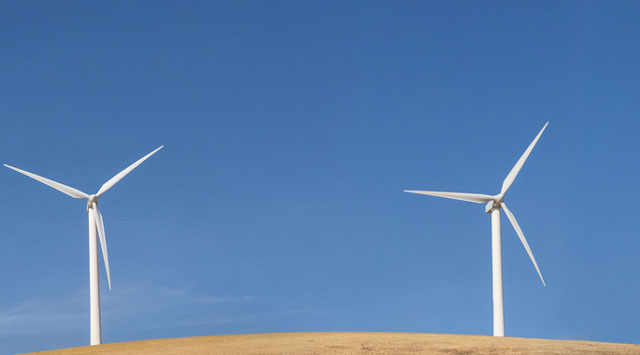
Wind farm operators are under no illusion that their small power generation output will be inadequate to meet South Africa’s baseload issues. However, they believe that in time new storage measures and lower costs will change the game radically.
Aurora Wind Power head of construction Christiaan Swanepoel told media on a site visit to Wind Farm 1 that wind farms would need to generate 132GW to supply Eskom’s current 44GW of baseload supply.
The reason wind needs to supply four times the demand is because each 2MW wind turbine only has a 30% to 40% average load factor, which is much lower than coal or nuclear energy.
Considering that the 47 turbines on this wind farm only deliver 90MW into Eskom’s grid, it would take 22 000 wind turbines to replace all current power generation in the country.
The wind farm outside Vredenburg, 150km north of Cape Town, was commercially activated on 9 June this year, which Swanepoel said was one month ahead of schedule and within budget.
“You would need three times the installed capacity to run baseload,” said Swanepoel. “And that’s only if the wind is not seasonal.”
That’s probably [not] going to happen any time soon, so what needs to be achieved is better, affordable storage technology, said Swanepoel.
“We need technology to store energy from wind and solar and must ensure it is cost-effectively doable. Currently, concentrated solar power uses molten salt solutions to store power, but it costs a lot.”
Aurora has a 20-year build, own and operate contract with Eskom and won the bid in the second round of the department of energy’s independent power producers programme.
As renewable energy becomes ever more efficient and cost effective, the debate is heating up over the right energy mix for South Africa and other countries.
The push to increase renewable energy in the mix will be high on the agenda at next week’s International Renewable Energy Conference taking place in Cape Town. — Fin24




